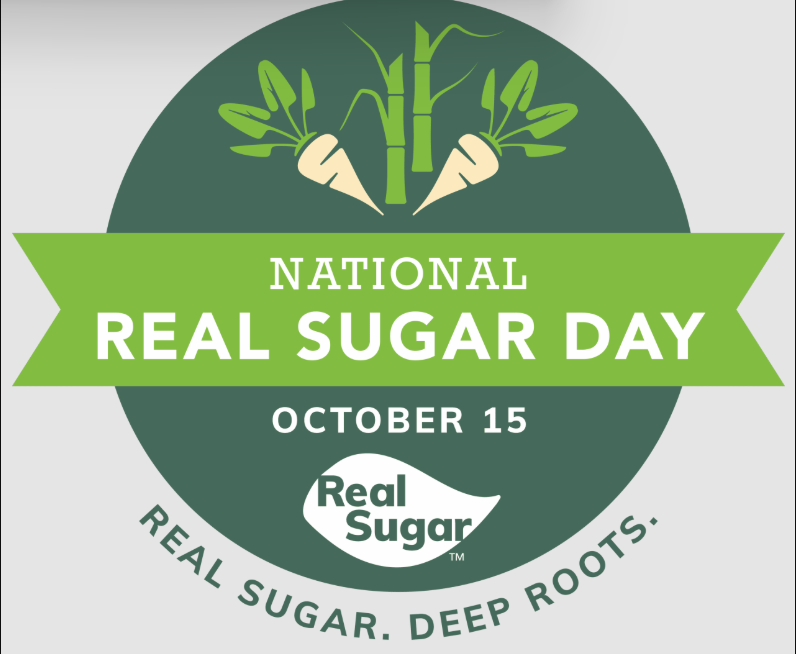Make it With Real Sugar!!!
- The Sugaright Team
- Oct 15
- 3 min read

On October 15, we invite you to celebrate the gold standard of sweetness - real sugar! National Real Sugar Day is more than a day to celebrate real sugar and all of the people who make it possible, but it is also a day to invite everyone who enjoys a little real sugar in their lives to learn and experience something new with real sugar made from sugar cane or sugar beets.
This day has taken on new relevance as the topics of ultra-processed foods and removing HFCS from our diets are grabbing headlines.
Call us trend setters, but Sugaright changed the industry by offering the perfect liquid sweetener for most food applications.
Sugaright Naturally Colored Liquid Cane Sugar is the Replacement Sweetener of Choice
1) Meets Consumer Preference for Limiting HFCS in Their Diets
With many consumers concerned about the correlation between the consumption of HFCS and health issues, many food companies are replacing HFCS with sucrose. And when non-GMO is required, liquid cane sugar is the preferred option, as almost all corn-based sweeteners produced in the US are made from GMO corn.

2) More Sustainable
LCA (Life Cycle Assessment) studies indicate that HFCS may have up to 30–50% higher GHG emissions than cane sugar in most scenarios. Additionally, back to the GMO story, cane sugar contains less residual glyphosate (Round-Up). Another chemical in the MAHA cross-hairs.
3) An Easy Liquid-to-Liquid Transition
When McDonald's required their bun suppliers to transition out of HFCS, replacing one liquid ingredient for another proved to be low-capital-intensive and of minimal disruption to bakery operations.
What is the difference between HFCS and sugar?
Sucrose (sugar), the most well-known sweetener, is derived from sugarcane or sugar beets. Sucrose is a disaccharide containing one molecule of glucose and one molecule of fructose.
HFCS is derived from corn starch through the action of different enzymes. Starch itself is a chain of glucose molecules joined together. When corn starch is broken down enzymatically into individual glucose molecules, the end product is corn syrup, which is essentially 100% glucose.
To make HFCS, isomerase enzymes are then added to the corn syrup in order to convert some of the glucose to fructose. Different formulations of HFCS contain different amounts of fructose. The push back from health-conscious individuals against the ubiquitous presence of HFCS in the US diet, has created this demand for a more natural replacement such as Sugaright Liquid Sugar.

What about calories and sweetness?
On a solids basis, sugar and HFCS have the same number of calories as most carbohydrates; both contribute 4 calories per gram.
The most common forms of HFCS contain either 42 percent or 55 percent fructose and these are referred to in the industry as HFCS 42 and HFCS 55. The rest of the HFCS is glucose and water.
Liquid sucrose and HFCS 55 are equal in sweetness. When HFCS was developed, it was specifically formulated to provide sweetness equivalent to sugar so that consumers would not perceive a difference in product sweetness and taste. It is commonly used in soft drinks in the US.
HFCS-42 is somewhat less sweet and is used in many fruit-flavored noncarbonated beverages, baked goods and other products.

What is the conversion ratio between HFCS and Liquid Sucrose?
HFCS 55 was formulated specifically to be a direct substitute for Liquid Sucrose with the same solids and the same sweetness. On a dry basis level, liquid sugar will be sweeter than the HFCS 42, so less liquid sugar can be used when the primary function of the HFCS is to add sweetness.
All HFCS to liquid sugar conversions must be properly tested by your R&D team.
With the combination of government priorities and consumer preferences, it may be time to change the way you think about sugar.
Please contact us if you would like to receive a sample to begin the process towards a less processed food supply.












































Comments